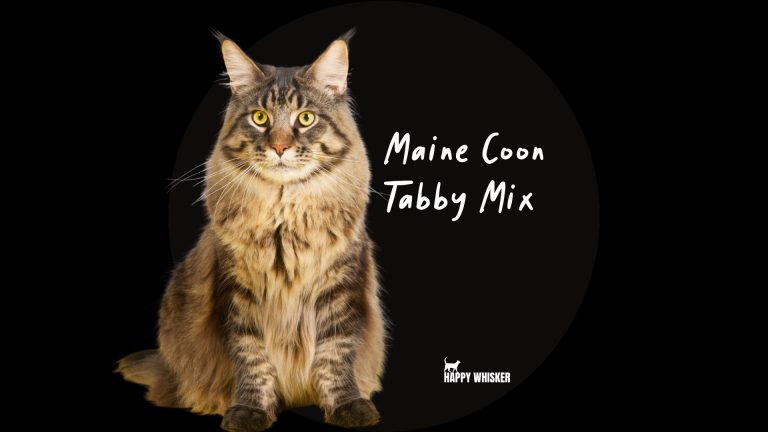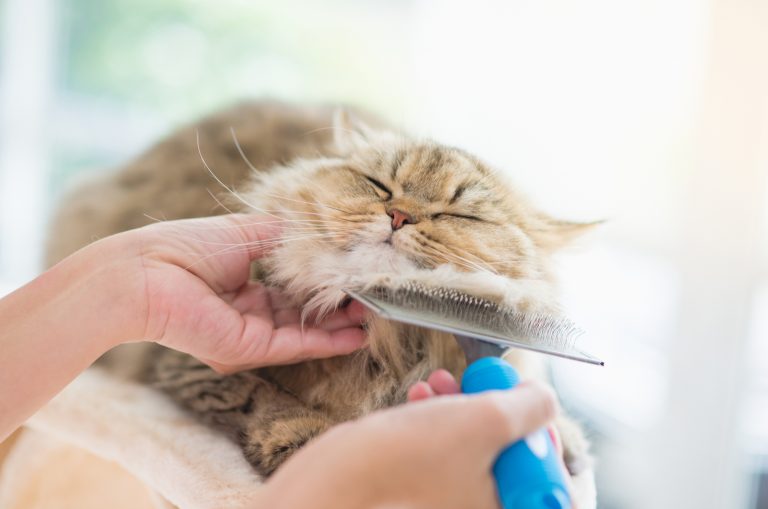How To Clean Cat Tree? Disinfect And Clean Your Cat Tree
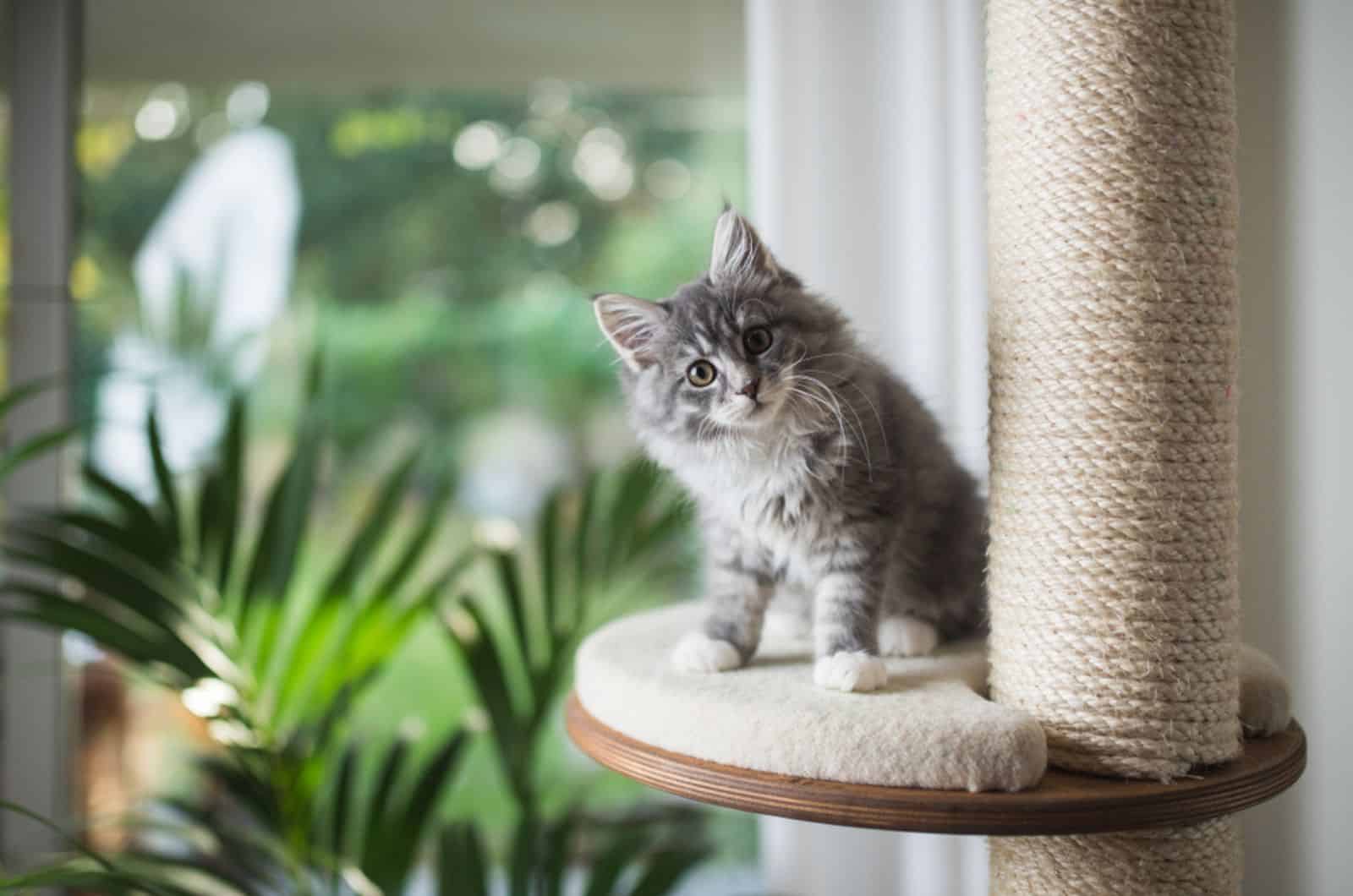
Every cat loves a cat tree! Of course, a used cat tree can get quite grubby. If your cat has been using its cat tree for a while, it’s probably time to clean it! We all want what’s best for our feline friends, so let’s see what the best way to clean your cat tree is.
With regular play, you may notice scratch marks, stains, and cat hair on the cat tree. Keeping your cat tree clean is critical; it keeps unpleasant smells and pet hair at a minimum. Cleaning the cat tree is good for your cat and good for the humans in your household too!
Check out my step-by-step guide on how to clean your cat’s tree. You can consider the guide as three different methods for regular cleaning or as three steps for when cleaning and disinfecting once every couple of weeks.
How To Clean Cat Tree: Guide
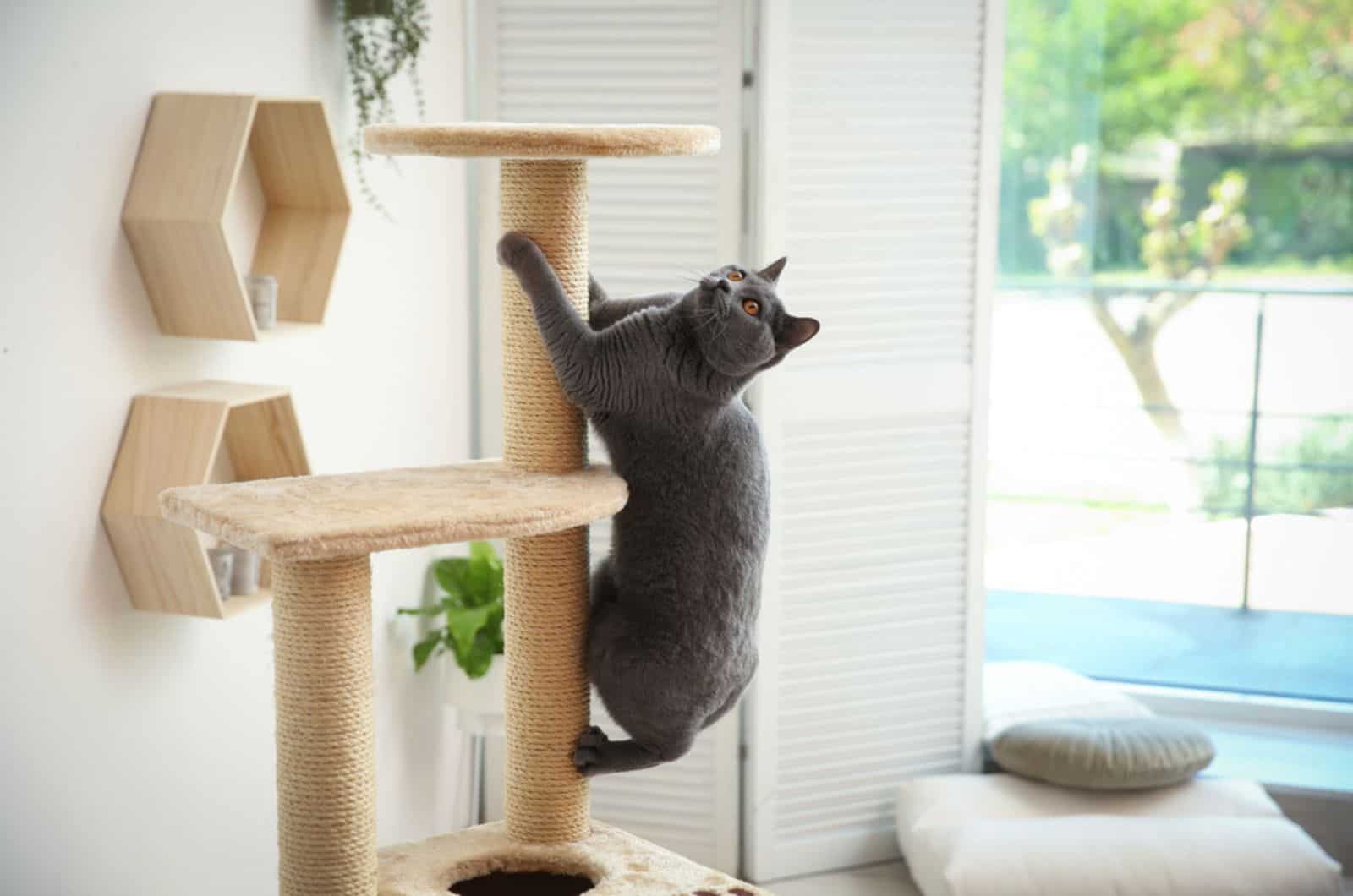
Follow these steps to make cleaning and disinfecting your cat’s tree as simple as possible
First, you’ll brush out the entire cat tree and vacuum it. Then, you’ll scrub and de-shed it, and then disinfect all its surfaces.
What you need for the entire process:
Odor neutralizer (preferably enzyme-based, found in pet stores)
• Dish soap
• Brush
• Scrubbing brush
• Vacuum cleaner
• 3% hydrogen peroxide
• Water
• Towels
When you get used to cleaning your cat tree or other cat furniture, you may choose to use a splash of bleach or baking soda or even get a separate carpet cleaner, a smaller one that will only be used for your cat furniture cleaning sessions.
Lint rollers are another useful tool for picking up cat hairs from cat tree surfaces. However, for thorough cleaning of cat trees, you’ll need to put in more effort. When I first got a cat tree, after just a couple of days of my cats using it, I found myself searching for how to clean cat tree; what is the best way?
After reading a lot about how people clean cat furniture, I tried just brushing to remove the hairs and cleaning the stains with dish soap, then using vinegar and water to neutralize the odors… I tried a lot of different methods before I discovered an effective technique.
Now, I can proudly say that the following are the best three methods, especially if you use them as a step-by-step approach.
1. The Usual Brush & Vacuum
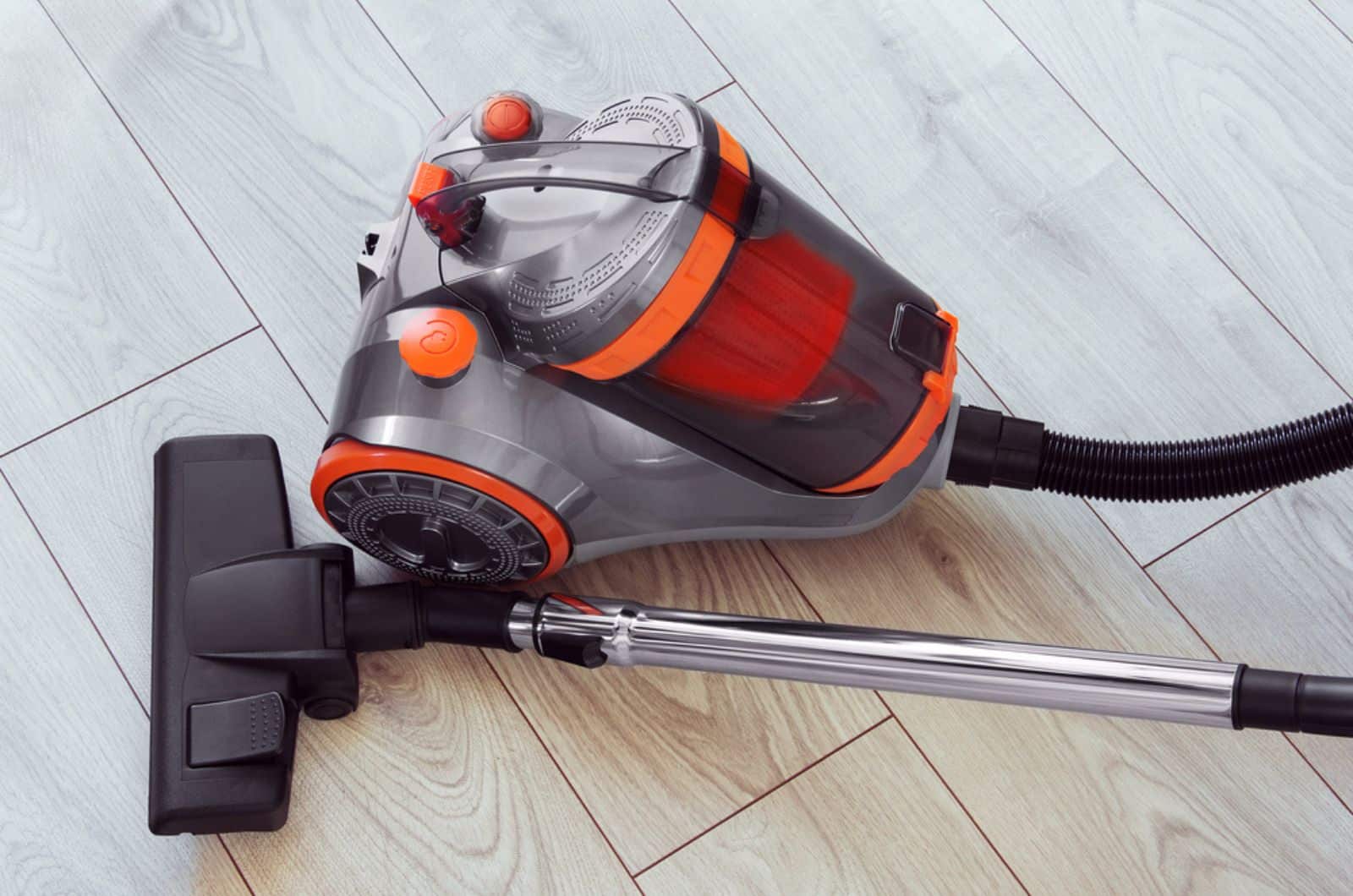
For this step, you’ll need a brush and a vacuum cleaner. The first thing you’ll need to do is take the cat tree outside or into an open area where you have space to brush it out. Outdoors is best because this will reduce the amount of hair and fluff floating around your home!
If you own a large cat tree, you can just lean it on the wall and clean around it as well. Leaning the cat tree will make it easier for you to clean and brush out the hair.
Your cat tree is usually covered in faux fur, soft plush or sisal rope, so it is safe to touch the walls.
The next thing to be done is to brush out all the carpeted areas on the cat tree. Clean into all the corners as well, as those are the spots where most fur accumulates.
You need to brush and scrub with a back-and-forth hand motion, and you’ll see how easily your brush collects all the cat hair. Once it’s full, empty it, and brush again.
After The Brushing Comes Vacuuming
When you’ve brushed out the entire cat tree, you’ll need to vacuum. Using the vacuum cleaner, go over every area, including the soft fur and the carpeted areas. If you’ve been cleaning the cat tree indoors, you’ll need to vacuum the floor around it as well.
Vacuuming will effectively lift any hairs that are left and pull out all the dirt from the tree. Vacuum inside any hammocks, cat condos, cat towers, cat scratch posts, and every little spot your cat tree has. You might be surprised how much dirt accumulates in the cat tree.
Using a vacuum is a must as it can get into every corner of the cat tree and effectively pull out all dirt, any bits of cat litter that were stuck in the cat’s paws, dust, any traces of poo, and even embedded hairs.
2. The Thorough Deep Clean
You can use this step as the next part of the process or as a separate method all by itself when you are doing an interim clean. You’ll need a scrubbing brush to do a deep clean. If you haven’t cleaned the cat tree since you got it, this step is a must.
Vacuuming won’t be enough if you haven’t cleaned your cat’s tree in a long time, so deep cleaning is required. It is a great way to get rid of all the hidden dirt that’s stuck in your cat’s tree.
You’ll need to go over all the areas in the cat tree with a shedding brush. Simply start going over it and don’t miss a single spot. De-shedding the cat tree with a shedding brush will remove all the cat fur stuck in the cat tree’s fur or carpets.
The brush reaches deep into the material, but you need to do it carefully and slowly in the carpeted or furry areas, so you don’t rip out parts of the carpet or faux fur.
We don’t want to damage the cat tree, just clean it. Keep a trash bag or a bucket beside you, so you can easily clean the brush and repeat the motion.
Note: Use the brush in a forward motion only.
3. The Final Disinfectant Touches
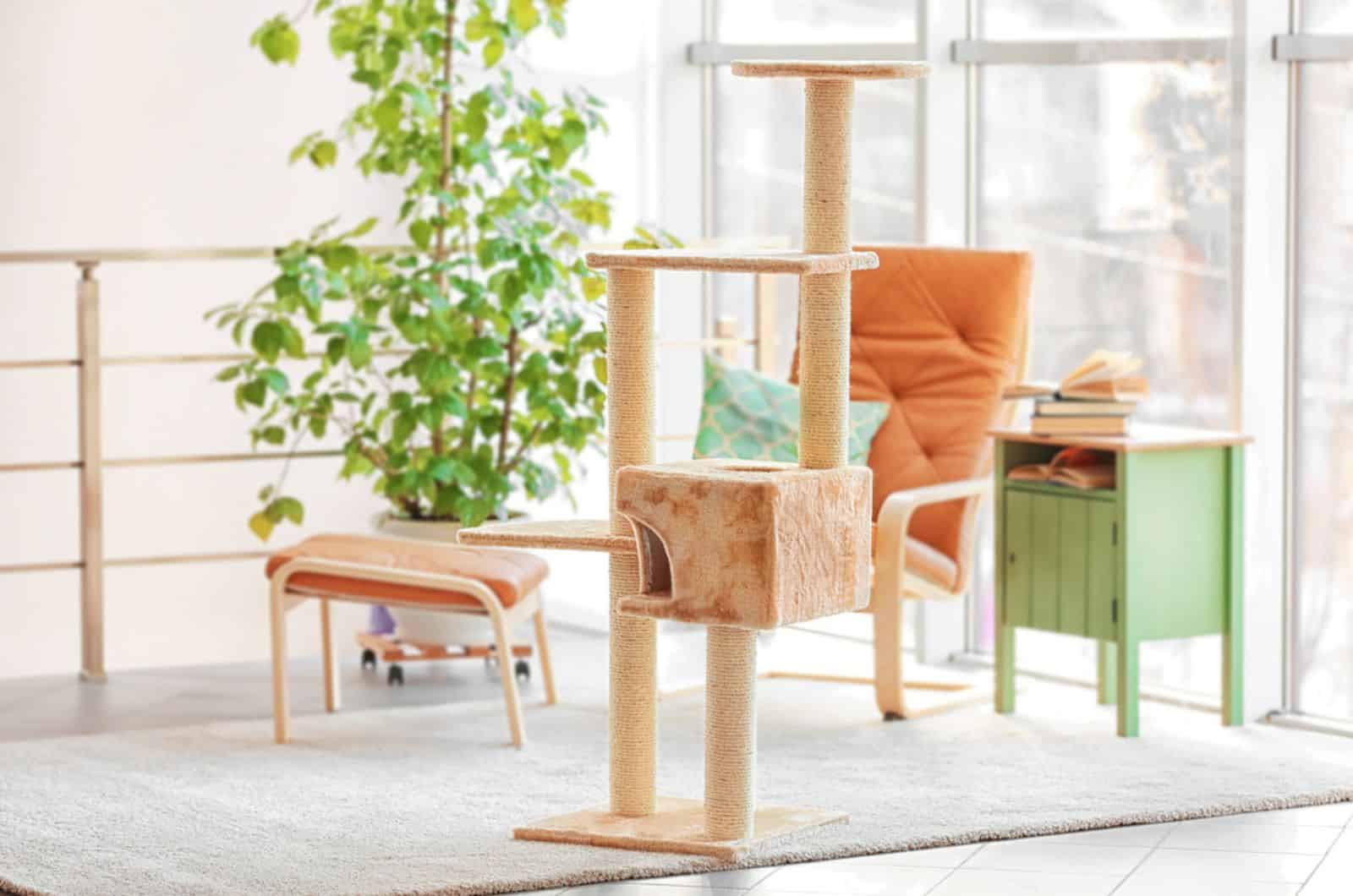
At this stage, you’ve removed all the hairs and fur, and even stains from the cat tree, but it is still not completely free of fleas, germs or bacteria. Your cat might pee or even poop accidentally or just leave a little drop on the cat tree as it rushes to its litter box.
However, even a little drop of pee can cause bacteria to multiply and can easily leave behind foul odors. These smells, bacteria, and germs are bad for your cat’s health and your health as well. This is why you need to sanitize and disinfect the cat tree too.
You’ll need some germ-killing substance, of course, but before you think that hydrogen peroxide isn’t safe for cats, don’t worry. We are only using a very small amount to clean the cat tree and once it’s done it will evaporate, so your cat won’t come into contact with any of the chemicals.
Spray It, Don’t Say It!
You’ll need 3% hydrogen peroxide, which you need to mix with lukewarm water. The best way is to mix it and put it into a spray bottle, then spray it all over the cat tree.
Then you need to scrub it off with paper towels, or even better, with regular towels. Add some pressure to your scrubs, and then add the odor remover and leave it to set for 4 or 5 minutes.
Again, use a towel to soak up any liquid, and then you can wipe the entire surface. You can brush the tree again to remove any stains, hairs, or dirt that’s left.
Scrub-A-Dub-Dub
The next thing you do is soap up the tree. Using a scrubbing sponge, you scrub the cat tree and all its surfaces. Reassemble the parts if you can’t get to all the crannies and tight spots (just remember where all the parts go so you can put them back together afterward).
Mix some dish soap with hot water, and soak the sponge. Then scrub everything.
You can go over the cat tree with the DIY hydrogen peroxide mixture again, which might take a bit longer, but it will be an excellent finishing touch. Leave it to air dry for a bit, and then your cat’s good to go.
After all, what’s a few more minutes if it’s good for your cat’s health?
Some Other Cat-Safe Disinfectants You Can Use:
Other cleaning products, i.e. disinfectants, that are safe to use when cleaning cat furniture include white vinegar, citric acid, and baking soda. You should always avoid strong chemicals, for example phenol chloroxylenol, as it is very harmful for pets.
FAQ
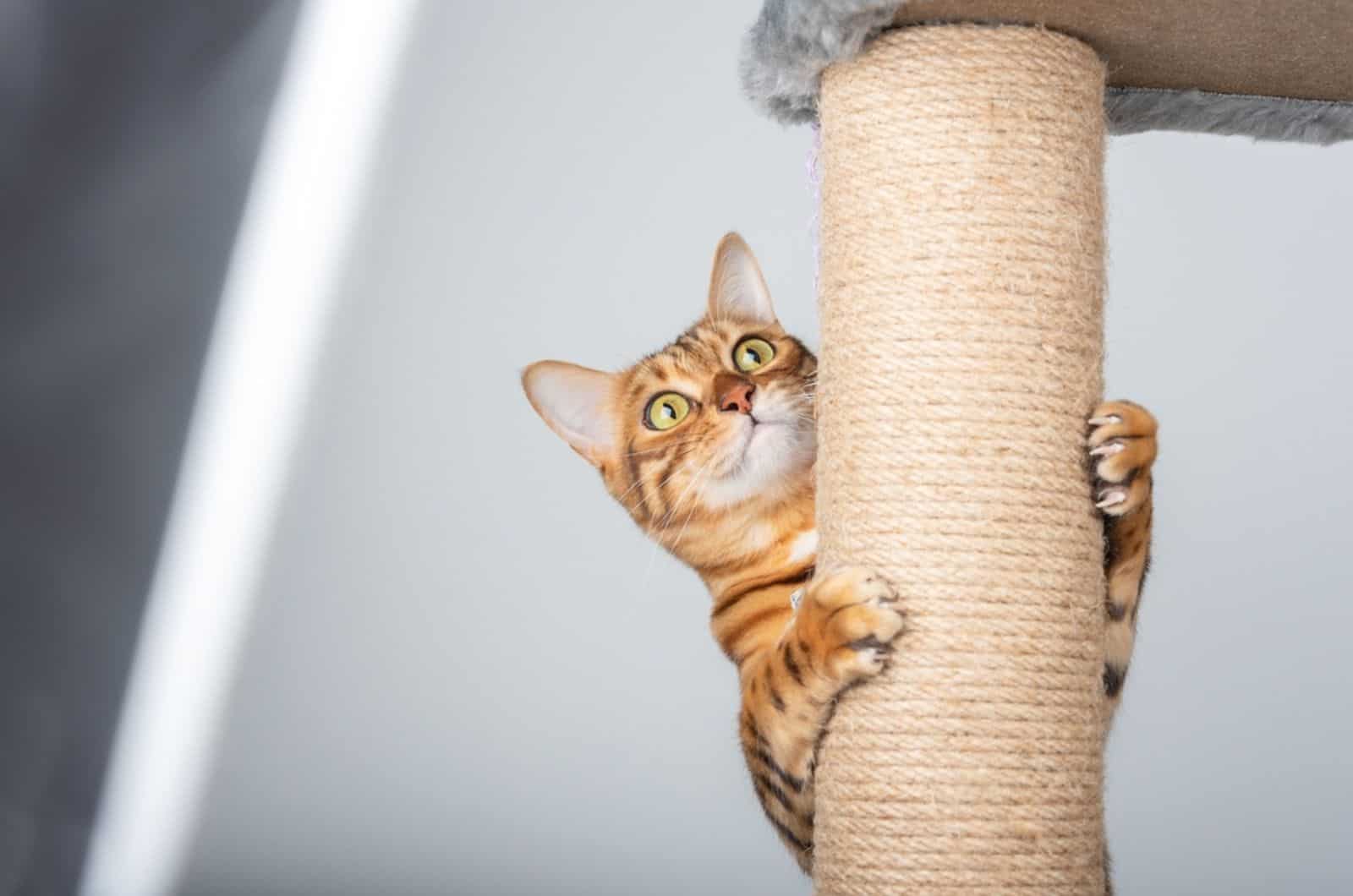
How do you clean a used cat tree?
First, brush the entire cat tree and vacuum all of the stains. Then you’ll need to clean and de-shed it before disinfecting all of its surfaces.
You’ll need a brush, scrubbing brush, cat-safe disinfectants and deodorizer, dish soap, water, towels, and a vacuum cleaner.
Step-by-step, you’ll brush all the hairs and cat fur out, then vacuum it, de-shed the cat tree, and finally disinfect and air dry it.
How do you refresh a cat tree?
It depends which part you want to refresh. Whether it’s the entire tree or a part of it, you’ll need to remove the section, take off the fur, plush, or sisal rope, and replace it with the new material.
There are many diy tutorials you can check out online, depending on which part you want to fix up. If you want to refresh the scratching posts, you’ll need to take off all the old bits of sisal rope and glue new rope to the post, positioning it carefully and keeping the rows tightly together.
If you want new fur for the beds or carpets for the platforms, it’s basically the same process, just be careful not to damage the construction of the tree.
How do you clean cat tree stains?
The best solution for stains on a cat tree is 3% hydrogen peroxide. Use only a small amount of 3% hydrogen peroxide, mixed with lukewarm water, and then put it in a spray bottle so you can easily spray it onto the stains.
Afterward, wipe it off with a towel or paper towel, and you’re good to go. Before letting your cat back on the tree, leave it to air dry fully so that the hydrogen peroxide evaporates from it.
How do you get bad cat smells out of a cat tree?

A deodorizer is the first thing that comes to mind, but other than that, you can use a mixture of vinegar and baking soda.
Mix these two ingredients in a spray bottle and spritz your cat tree all over. Vinegar helps to neutralize any foul odors that might get stuck in a cat tree and it helps get rid of bacteria as well.
Baking soda also helps to both neutralize odors and eliminate harmful bacteria.
Is it advisable to buy a used cat tree?
Purchasing a used cat tree is generally not a great idea. The used product may cause stress, sickness, and even behavioral problems in your cat.
If the cat tree has had a previous cat owner, your cat may avoid it completely because another cat has marked it as their territory.
The cat tree could harbor bacteria, germs or fleas from the previous user, or there may be cat food from the previous cat.
Final Words
So to recap, how to clean a cat tree? You need to brush the entire cat tree, scrub it with a scrubbing brush, vacuum the tree and all around it (especially if you’re cleaning it indoors), then disinfect all surfaces and air dry it before you let your cat use it again.
I truly hope you’re going to try this the next time you go to clean your cat tree since this is my tried-and-tested technique and it works so well; my house is free of bad smells, and my cats are healthy and happy.
Hopefully, you’ll find this as useful as I did. If you get bored (it’s not a fast process!), think about your cat and its health and you’ll soon be glad you invested some time in cleaning the cat tree!
Related Articles:
• Best Cat Tree For Large Cats – TOP 13 Product Reviews
• Cat Tree That Looks Like A Tree – TOP 10 Product Reviews
• Top 15 Mid Century Modern Cat Tree Choices: Pick The Best One



